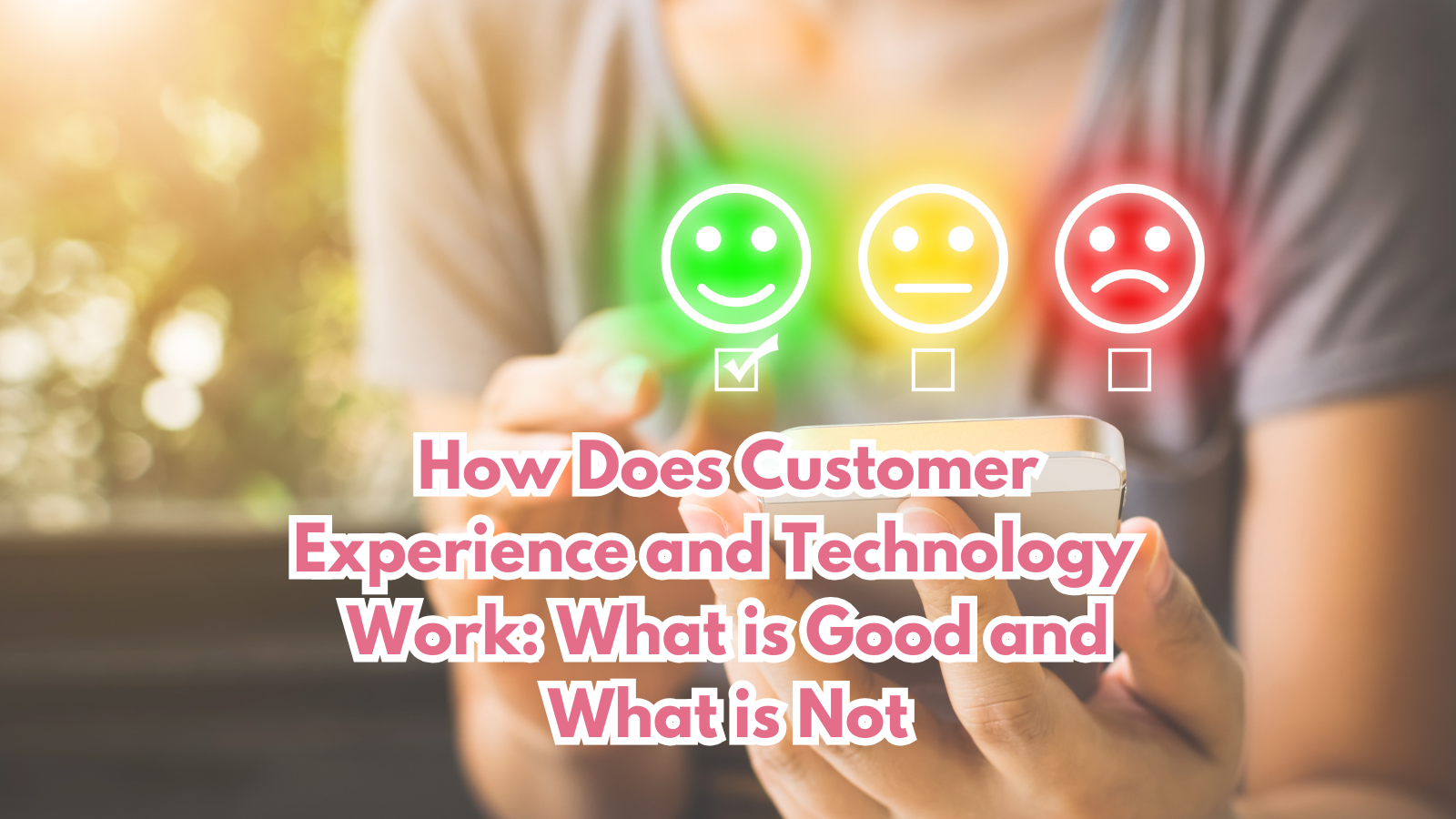How Does Customer Experience and Technology Work: What is Good and What is Not
Technology boosts speed and personalization — but real connection still needs a human touch. Here’s how to find the right balance.

Technology has changed how businesses engage with their customers in the last few years. From chat tools to automated insights, companies are discovering new ways to more deeply know what customers want, react more rapidly and produce experiences that seem more resonant.
There’s no question these tools have powerful benefits — but they also have trade-offs. Despite its many benefits, an overreliance on automation can come at the cost of emotional resonance, leave you questioning trust, and complicate human connection.
So, where does that leave us? Here, a closer look at how technology is affecting customer experience — for better and worse — and how businesses can aim for a healthy middle ground.
What Technology Contributes to the Process
- Help, Anytime You Need It
One of the biggest advantages of tools like chatbots is availability. At 3 p.m. or 3 a.m., customers can often receive a quick response to a simple query. That’s a huge plus in an era when demands for speed are through the roof.
For businesses, particularly those that serve customers in global markets, this kind of around-the-clock support has the potential to be a game changer. - Speedier Responses, Less Languishing
Automation helps deliver solutions more quickly. Simple queries can be addressed immediately, and more complex ones can be routed to the appropriate person more quickly.
Quick responses aren’t just a bonus — they help shape people’s perception of your brand. The faster and smoother we can make that experience, the more likely the customers are to return. - More Intelligent, Personalized Interactions
When used well, data-driven tools can allow companies to customize their communications and products for individual customers. That might involve making a relevant product suggestion at the right moment or delivering a message that feels more like a conversation than a campaign.
If done well, personalization builds a stronger relationship — and, in many cases, more business.
The Flip Side: What Technology Still Can’t Do
- The danger of losing the human element
A human conversation can’t be completely replaced no matter how well a system is programmed. Humans want to feel listened to, particularly if something’s gone wrong. When each interaction feels like it has been generated, it can become robotic or scripted.
It’s important to recognize when a situation requires a human touch — and ensure that customers can easily reach a real person when they need to. - Limited Emotional Awareness
Service situations are often emotional — frustrating, confusing, urgent. And while some tools can detect tone or keywords, they lack the full understanding of context that a person would have. A trained agent can detect when a person is having a bad day and recalibrate accordingly. Machines can’t.
Without that emotional insight, there’s a danger of responses coming off as off, or even exacerbating the issue. - Concerns Over Privacy and Trust
More customers than ever are aware of the use of their data — and they are interested in transparency. If someone is talking to a chatbot, they ought to know. If their data is being collected or analyzed, they deserve straightforward information.
Being clear about what’s automated, and how information is handled, is not only good practice — it promotes trust.
Striking the Right Balance
The aim here is not to supplant human interaction but rather to enhance it through technological means.
Here are a few things companies can do to make it happen:
- Start small. Automate repetitive tasks; such as responding to frequently asked questions, sorting support tickets.
- Offer options. Keep a clear line to actually talk to a human.
- Support your team. Leverage automation insights for staff to get back to customers faster and better.
- Be open. Inform customers when they’re speaking with a bot, and the ways their data is being used.
I think it all comes down to this: A much better experience for everyone when people and technology work together.
Wrapping Up
Technology is obviously becoming an increasingly essential component of customer experience—and it looks like it’s not going anywhere. It enables businesses to act more quickly, serve their customers better, and always be on hand. But it’s not a magic fix.
Coverage balance is the main thing that matters. The companies that will make their mark won’t be the ones that automate everything, but the ones that know when to deploy tech, and when to just be human.
Because, no matter how powerful the tools become, great customer experience still lies in authentic connection.
